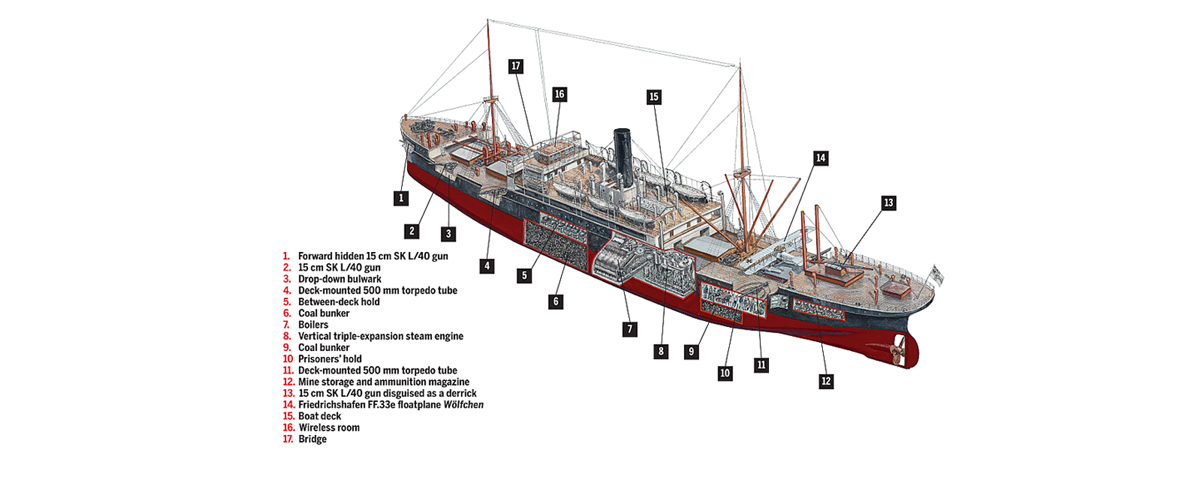Length: 442 feet 11 inches
Beam: 56 feet 1 inch
Draft: 25 feet 11 inches
Displacement: 11,200 tons
Coal capacity: 6,300 tons
Power: One vertical triple-expansion engine fired by three boilers, generating up to 2,800 indicated horsepower, turning a single screw
Speed: 10.5 knots
Range: 42,000 nautical miles at 9 knots
Armament: Seven 15 cm SK L/40 guns (two hidden inside the forecastle, two hidden directly behind the forecastle, two hidden directly behind the superstructure and one mounted aft); three 5.2 cm SK L/55 guns in reserve; four deck-mounted 500 mm torpedo tubes (two hidden in front of the bridge, two hidden aft in front of the poop deck)
Complement: 347 officers and men
In 1890 Vice Admiral Friedrich von Hollmann, state secretary of the German Imperial Naval Office, began a buildup of his nation’s navy. Hollmann was a proponent of merchant raiders, designed to disrupt enemy shipping as Confederate auxiliary cruisers had done during the American Civil War. His successor, Alfred von Tirpitz, favored battleships. Hollmann’s strategy was borne out in World War I, as Britain’s Royal Navy largely bottled up Germany’s big warships by mid-1915, while merchant raiders such as the windjammer Seeadler (see feature story in September 2018 issue) and steamers Möwe and Wolf remained in the fight.
Converted in 1916 from the freighter Wachtfels, Wolf left Kiel that November and rounded the Cape of Good Hope. After laying minefields and menacing shipping in the Indian Ocean, it continued east to stalk the waters off Australia and New Zealand. Wolf’s main armament comprised seven 15 cm guns and four torpedo tubes. Fregattenkapitän Karl August Nerger also relied on a Friedrichshafen FF.33E floatplane dubbed Wölfchen (Wolf Cub), which provided invaluable over-the-horizon scouting and participated in five captures. On June 16, 1917, the biplane stopped the 567-ton, four-masted schooner Winslow by dropping a bomb in front of the U.S. ship. The pilot then landed Wölfchen alongside Winslow and—pistol in hand—ordered its captain to steam toward Wolf.
By the time the merchant raider returned to Kiel on Feb. 24, 1918, it had captured or sunk 14 ships, while its mines had sunk another 13. It had also completed the longest voyage of any German raider. Nerger was awarded Prussia’s Pour le Mérite. After the war Germany ceded Wolf to France, which operated it as SS Antinous until 1931, when the ship was scrapped. MH





